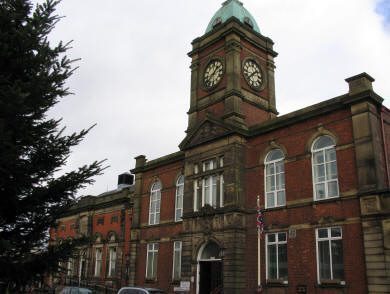There are so many reasons to choose SimplyFixIt for your iPhone Repairs. Our technicians are certified by Apple. We use the highest quality screens available, including genuine Apple screens, and we pay our staff the Real Living Wage.
For over 25 years we have carried out computer and other IT repairs for people who came into our shops, and now we can give the people of Royton the same quality of repairs for their iPhones.
Mail-In iPhone Screen Repairs for Royton, by SimplyFixIt
People from Royton choose SimplyFixIt as their iPhone repair company because we offer the highest standards of repairs, including using genuine Apple screens, which typically can't be matched by a local independent computer store. They post us their iPhone, which is professionally repaired, and returned by a secure overnight courier. In most cases, they receive their iPhone back 2 days after they post it to us.
Fast Repairs
Quality Components
Spread the cost
All Repairs Guaranteed
At SimplyFixIt, we believe that doing things right is better than doing things quickly, so there may be some cases where we need just a bit longer to get your iPhone ready. Don't worry though, as soon as the iPhone repair is completed, we'll be in touch to let you know. We can then arrange a secure, express delivery back to Royton.
SimplyFixIt customers near Royton
We Fix iPhones for people from all over the country, including near Royton. Chances are that you live close to one of our customers already. Here is a map of the people1, who live near Royton, that have had their iPhone fixed by SimplyFixIt recently. They have posted their iPhone to us, and then we repaired it and sent it back using an insured, overnight courier service.
1For security & data protection reasons, we are not showing the exact location of our customers. We apply slight randomness to the location markers, so they don't show the exact address. The markers fall in a slightly different location each time, but the general area is correct.

Send your iPhone to us via Royal Mail Special Delivery, which should provide you with adequate insurance. We will fix it and return it to you without any fuss.
Choose an iPhone
More about Royton
Royton is a town in the Metropolitan Borough of Oldham, Greater Manchester, England, with a population of 21,284 in 2011. Close to the source of the River Irk, near undulating land at the foothills of the South Pennines, it is 1.7 miles (2.7 km) northwest of Oldham, 3.2 miles (5.1 km) southeast of Rochdale and 7.6 miles (12.2 km) northeast of Manchester.
Within the boundaries of the historic county of Lancashire, Royton and its surroundings have provided evidence of ancient British, Roman and Viking activity in the area. During the Middle Ages, Royton formed a small township centred on Royton Hall, a manor house owned by a long succession of dignitaries which included the Byrons and Radcliffes. A settlement expanded outwards from the hall which, by as late as 1780, "contained only a few straggling and mean-built cottages". Farming was the main industry of this rural area, with locals supplementing their incomes by hand-loom woollen weaving in the domestic system.
Royton has the distinction of being the first town where a powered cotton mill was built; at Thorp in 1764, and is one of the first localities in the world to have adopted the factory system. The introduction of textile manufacture during the Industrial Revolution facilitated a process of unplanned urbanisation in the area, and by the mid-19th century Royton had emerged as a mill town. At its zenith, there were 40 cotton mills—some of the largest in the United Kingdom—employing 80% of the local population. Imports of foreign cotton goods began the decline in Royton's textile industry during the mid-20th century, and its last mill closed in 2002.
Today, fewer than a dozen mills are still standing, the majority of which are used for light engineering or as distribution centres. Despite an economic depression brought about by the demise of cotton spinning, Royton's population has continued to grow as a result of intensive housing redevelopment which has modernised its former Edwardian districts.